Green Roofs and Vertical Gardens. What are they and what benefits do they have?
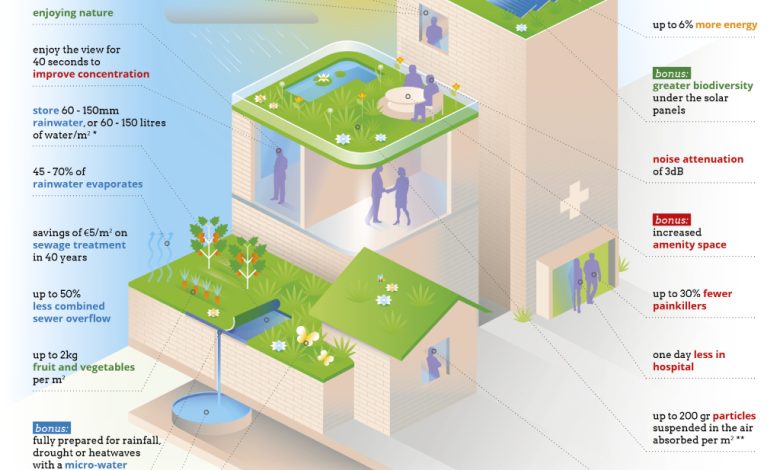
We recently talked about an initiative to install green roofs on buses that brought multiple benefits to the city and citizens. Well, today we are going to deal in more detail with the topic of green roofs: green roofs and walls.We will see what benefits they bring and what materials and species are being experimented with to make green roofs and vertical gardens last longer, guaranteeing the sustainability and functions of the structure with minimal maintenance.
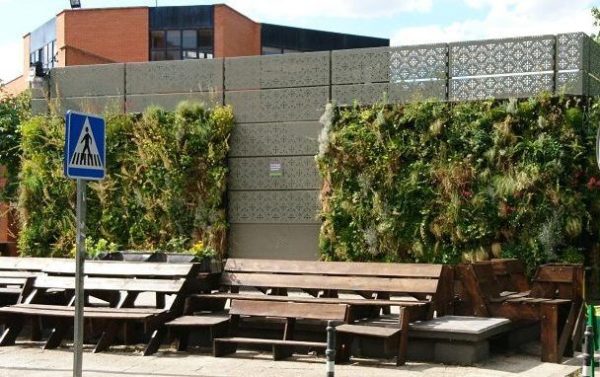
What are green roofs?
Green roofs are a construction formed by a continuous substrate on which plant species grow on a relatively large surface.
They can be developed both horizontally (roofs or green roofs), and vertically (vertical gardens, green walls, vertical gardens…).
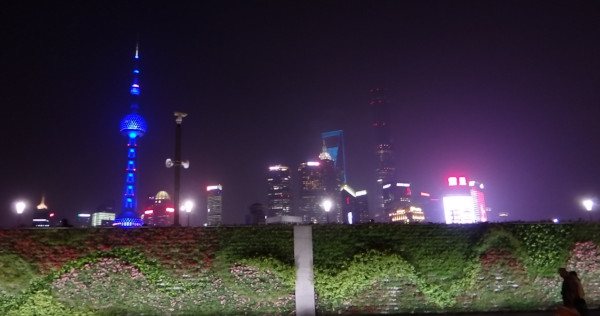
To build green roofs it is necessary to attend to a series of issues such as:
- Your location. Where the light is going to give it more, or where it is going to receive more rainfall…
- Its dimensions. What surface area of the building will it house, what shape will it have…
- Your materials. What species will it house, what substrate will support these species and what materials will support both the substrate and the plants to keep the building protected from possible water leaks. Together, these materials have the objective that these green roofs last over time, for this reason research on them has not stopped for years…
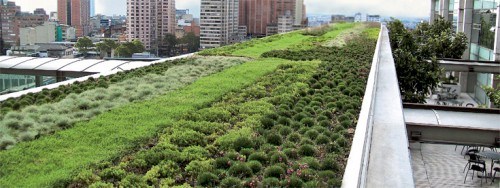
Objectives and benefits of green roofs
Green roofs are a construction, but mainly they are an essential element of urban nature.

They are built with the aim of beautifying, naturalizing and purifying the urban environment through the species they house.
But the benefits of green roofs and vertical gardens are not just a mere aesthetic effect derived from seeing the plants hanging or on a building. In addition, both green roofs and green roofs or vertical gardens have other benefits:
- They capture CO 2 from the surroundings. Gases from cars, emissions from chimneys, etc… Producing O 2 through its photosynthetic function. A 1m 2 roof captures 50 g/CO 2 per day, producing the oxygen a person needs for a year (Darlington, 2001).
- They insulate thermally. By receiving radiation from the sun, the building that houses it saves energy both to heat it in winter (the roof stores the heat) and to cool it in summer (the roof retains the heat and does not pass into the building), green roofs are thus an excellent natural insulation, a cover of 1m 2 manages to retain up to 5ºC. This effect is also reflected throughout the city, cooling it in summer and mitigating the heat that the asphalt can give off.
- They isolate acoustically. This insulating function also translates to the sound plane, a cover of 1m 2 isolates about 11 db, which is appreciated in areas of nightlife.
- They favor the biodiversity of the environment. A multitude of insects and birds roam the green roofs as it is a refuge for them in the city, which favors the spontaneous appearance of local species.
- They improve the perception of the citizen. According to psychological studies, green roofs improve the perception of the environment by human beings, which increases their mood, makes them more positive and more relaxed.

Green roof materials
As I have told you before, green roofs are a constructive element, an element of urban nature that has multiple objectives and is built with very specific materials seeking to last over time.
This makes a lot of sense, since if we are thinking of naturalizing the environment, the logical thing is to establish a structure that is sustainable and has minimal maintenance. It does not make sense to create a structure with an extra cost for the city, since, despite the many benefits it may bring, this would not be sustainable if it entails other high costs.
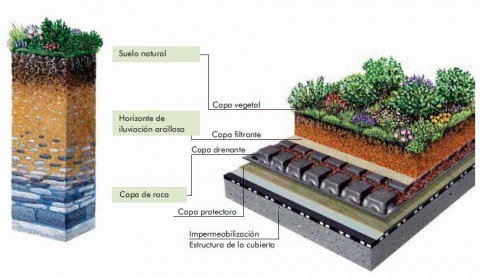
Thus, both the chosen plant species and the substrates that support them have been the object of study for many years.
I have been lucky enough to visit centers such as EL ENCÍN, from IMIDRA, to get to know these new materials for green roofs a little better. These new materials allow the structures to last over time. They will undoubtedly help vertical gardens and green roofs to consolidate in the not too distant future as one more element of the city.
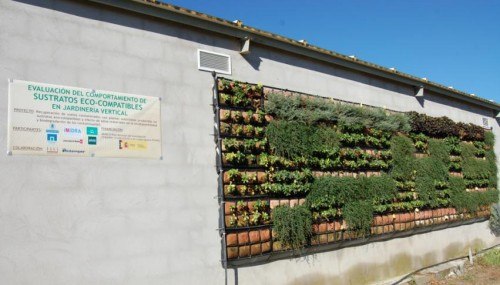
I will tell you a little about what materials are being worked with:
Substrates: The key to the support for the plants that house the ground covers lies here, in the substrate. Groundcover substrates are primarily hydroponic substrates. These substrates retain moisture better, so the roofs are guaranteed irrigation only with local rainfall. This hydroponic substrate has the novelty of containing 0% peat, something very important since peat is a scarce natural resource that is already being used a lot in all the industrial substrates that we buy for our orchard or garden.
If we are talking about naturalizing the environment, what is the point of extracting a natural resource from it to take it to the interior of the city…?
On this basis, several studies have been carried out with mixtures of substrates (coconut fiber, composted remains, pine bark, etc.) to determine their behavior over time and their ability to support different species, among other parameters…
The conclusions are very varied, but I can tell you that green roofs are established without any problem with mixtures that do not harbor any peat, that in the long run are free of parasites and fungi, are stable and maintain their fertility. Although its total useful life has not yet been determined.
As for the species that are cultivated, I have not collected as much information, but I can tell you that they are looking for species with a good vegetative surface (to capture as much CO 2 and solar radiation as possible), that have minimal maintenance and an ornamental or decorative character. To give you some examples, the following stand out: Teucrium chamaedrys, Othonna cheirifolia and various varieties of the Sedum genus as indicator plants during the preparation of the studies.
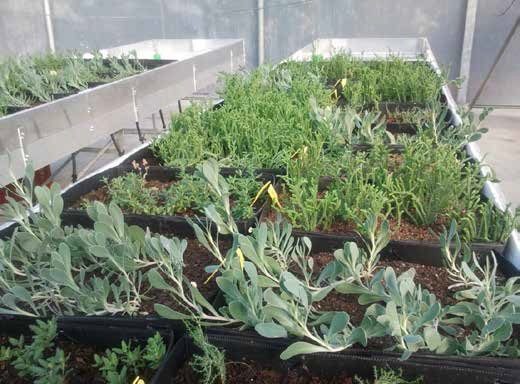
As a conclusion to all this, let me tell you that green roofs evolve day by day, with new substrates and species that guarantee their perpetuity over time and their function of urban naturation. I personally try to achieve a hybrid structure between a roof and an urban garden, with species that require minimal maintenance and offer the possibility of being harvested periodically for human consumption.
I’ll let you know how it goes, we’re working on it
If you have photos of other green roofs or vertical gardens that catch your attention, do not hesitate to attach your photos in the comments below. All the best

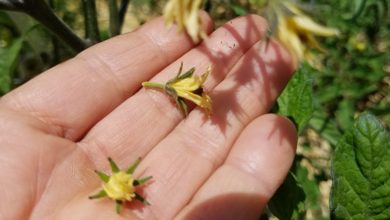
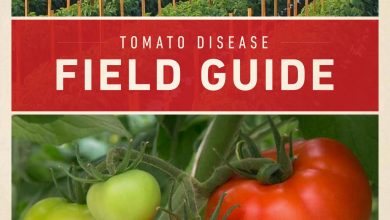
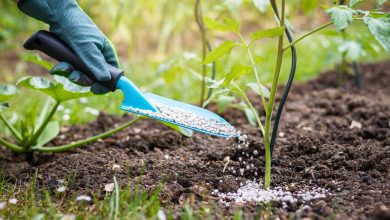
![Photo of Prune a Wisteria: [Importance, Time, Tools, Considerations and Steps]](https://www.complete-gardening.com/wp-content/uploads/2022/08/prune-a-wisteria-importance-time-tools-considerations-and-steps-390x220.jpg)